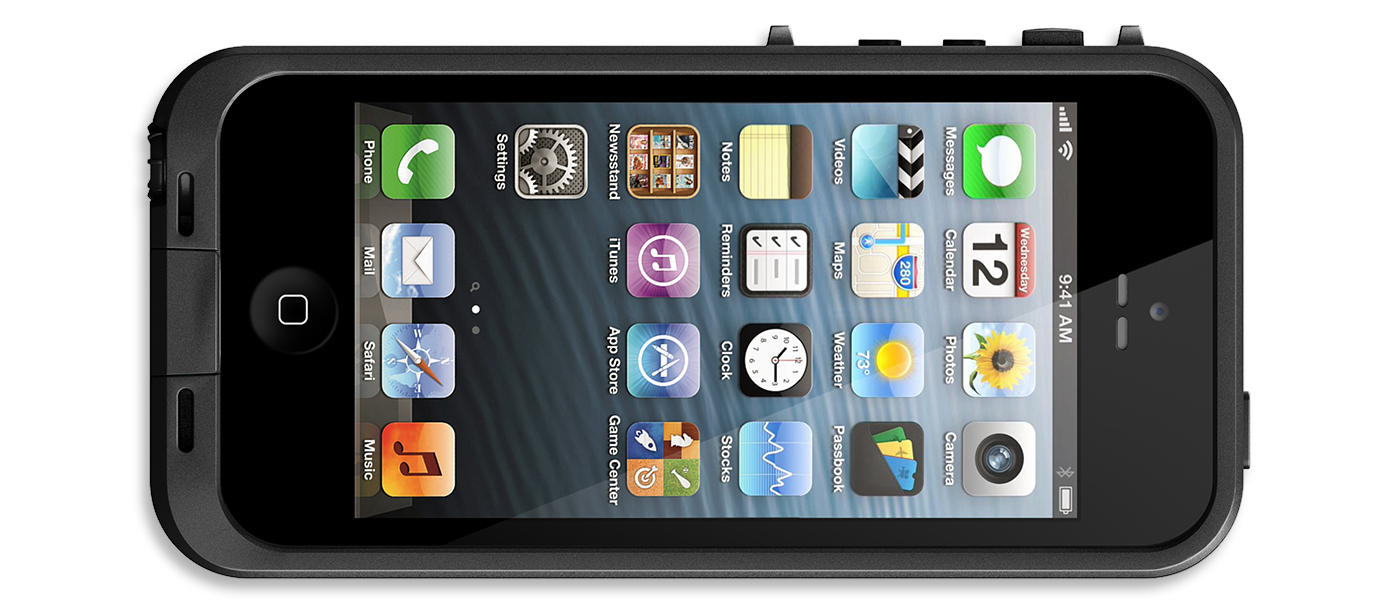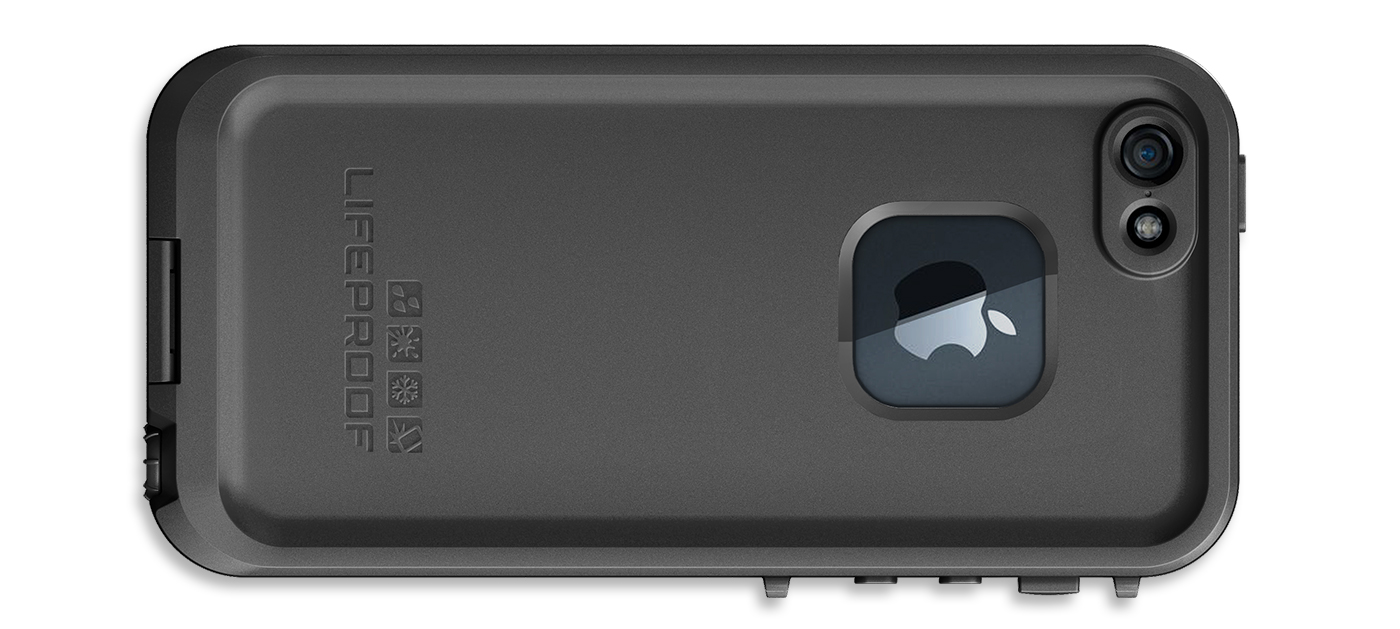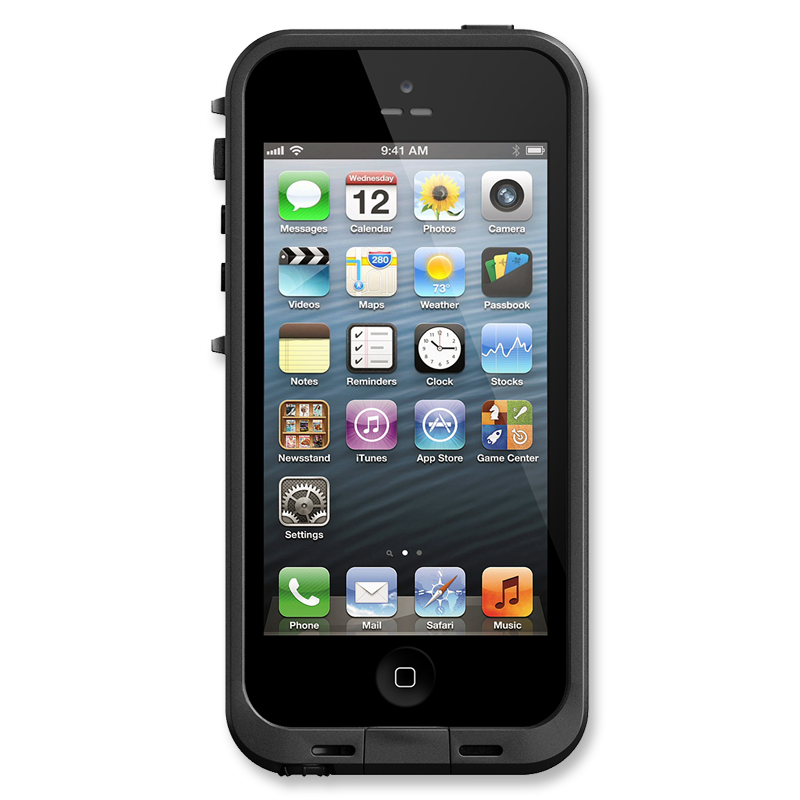I think it’s safe to say that Jony Ive, Apple’s design guru, didn’t spend too much time worrying about trail or mountain runners when he and his team were designing the iPhone 5. I can’t really imagine him waking up in a cold sweat in the middle of the night, proclaiming, ‘What about the ultra-runners!?’ That’s fair enough – it’s not his thing. Jony’s too caught up worrying how to sculpt the phone’s chassis from a single piece of aluminium or reducing the phone’s thickness by a millimetre or so. That’s his thing – his passion – and for that we should be thankful. The iPhone is a fantastic, incredible useful, device. The problem is that it’s a first rate rookie when it comes to the outdoor life. That’s where people like Gary Rayner come in.
 LifeProof Fre. © LifeProof
LifeProof Fre. © LifeProof
Necessity, as they say, is the mother of invention and it was Rayner’s desire to make his iPhone an integral part of his active lifestyle that first sowed the seeds of creativity, ‘I love to surf, cycle and run and I thought, “If I could make a case that’s totally impervious to life – everything you do – yet was slim and small enough to use everyday than that would be a complete game-changer,”’ remembers Rayner. The result was a svelte case that claims to completely protect an iPhone from the elements; water up to 2 meters deep; snow; dirt; dust, while also being able to withstand the inevitable drops, bumps and tumbles that life brings. The phone became, in other words, LifeProof.
 LifeProof Fre – sideview. © LifeProof
LifeProof Fre – sideview. © LifeProof
The first thing that struck me about the Lifeproof Fre is that, once fitted, my iPhone didn’t look like it’s been hitting the protein shakes – it’s welcomingly bulk-free, adding only a few millimetres to the phone’s width and depth and about a centimetre to the length. The advantage of remaining slim and trim is highlighted as it slips just as easily into running belt or jacket pockets as it did before being ‘mountainproofed’. It’s inconspicuous appearance, however, belies an intricate system of o’ring seals, glass camera lens, membrane speaker openings, doors and a lockdown hatch for the headphone jack. It sounds high-maintenance but in reality it’s simply a matter of clipping the two sides of the case together. Your phone now exists, fully functional, in a air-tight vacuum with the added advantage of being shockproof. It’s pretty damn cool.
 LifeProof Fre – from the back. © LifeProof
LifeProof Fre – from the back. © LifeProof
The Fre case is gaining momentum with trail runners and for good reason. iPhone’s are being taken out on the trails and mountains for multitudes of purposes – photos, GPS, emergency calls, music and as a compulsory item (mobile phone) for some races – but it has always come with an element of risk. The Fre, in this regard, really shifts one’s mindset. It was something I didn’t expect at all, but where I would have asked myself, ‘Will I risk bringing my iPhone?’ I now, simply, don’t even think about it. Worrying about damaging the phone becomes a non-issue and that’s a major bonus.
The Fre, as I have mentioned, transforms the iPhone’s form factor very little and the phone remains fully functional but it does, however, change the feel of how the phone functions. Using the fabled touchscreen, now covered with a clear plastic window, results in slightly altered feedback to how it would normally respond ‘naked’. It’s not that it doesn’t work, it’s just that it works differently. It’s a very small negative to a product that is overwhelmingly a positive addition for any iPhone-toting adventure seeker.

